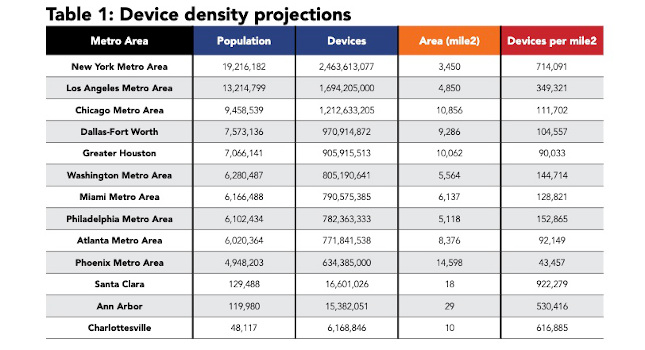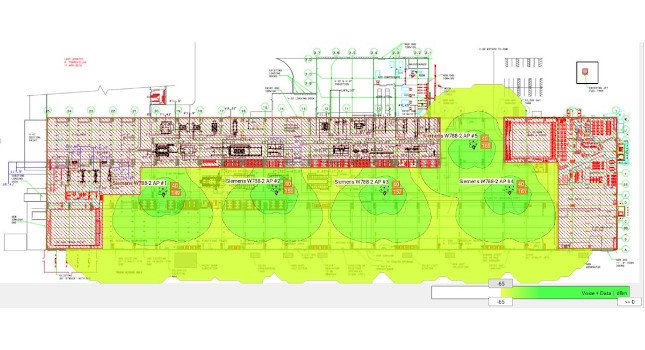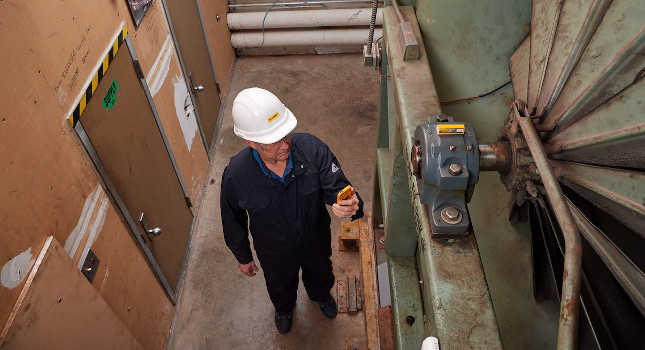The scale of projected deployments is staggering

The ultimate promise of the industrial internet of things (IIoT) is an explosion of digital data from the physical world that, used properly can improve the efficiency and quality of our lives across a range of settings, from our homes and cities to our factories and offices and everything in between.
According to the World Economic Forum, humanity will have generated roughly 44 zettabytes of data by the end of 2020. That cumulative “digital universe” has been mostly formed by our collective internet searches, messages, social media activity and entertainment consumption. In other words, mostly “digitally native” data.
The ultimate vision of the IoT will exponentially accelerate data creation as it endeavors to stream actionable insights from trillions of physical-world endpoints. Yet, despite its potential, the IoT has continually fallen short of analyst expectations.
Challenges to achieving IoT at scale
The most basic limitation has been one of scale — realizing such enormous value requires wireless networks with such a high volume of sensors so as to fundamentally challenge the boundaries of today’s technological capabilities.
One challenge to deploying sensors at scale is the issue of power. Trillions of sensors would require trillions of batteries, setting the world on a hamster wheel of battery maintenance that is too prohibitive from a cost, logistics and sustainability standpoint to justify the benefits.
Energy harvesting offers a solution by enabling sensors to operate without a battery, instead relying on ambient energy sources, such as temperature differentials, vibration and light.
Solving the first-order scaling problem of power goes a long way to realizing the dream of a trillion-node IoT. It avoids the mind-numbing task of incessant battery replacements that would otherwise be required. Depending on your outlook on battery advances, such a world with battery-operated devices would require anywhere from 274 million to 913 million replacements per day —an unsustainable approach for a category of technology designed to improve efficiency.
The other major challenge is wireless networking. Specifically, leveraging a wireless protocol that can not only operate at a low enough power budget to keep the battery out of the equation, but also simultaneously support high-density networks, low-latency operation, adequate data rates and reliable range.
Existing wireless protocols require too much power to operate without batteries, so they can’t rely exclusively on harvested energy. For others that can operate using lower power, the wireless range is poor, and these protocols do not scale to large numbers of devices. Researchers are beginning to develop new wireless protocols that can overcome all these issues simultaneously.
Wireless networks at scale
Backing up for a second, what exactly will wireless sensor networks look like with a trillion connected devices? Using the latest estimates of today’s 30 billion connected devices and an estimated 40 million square miles of habitable land on Earth, we can approximate that there are 750 devices per square mile scattered across the planet. With one trillion devices, that figure jumps to 25,000 devices per square mile.
Of course, devices are not distributed uniformly. Instead, there is some correlation between connected “things” and concentrations of people; more technology is deployed in and around population centers.
If we were to allocate one trillion connected devices across the world’s 7.8 billion people, we would have 128 devices per person. As seen in Table 1, this would yield a staggering device density for both metropolitan areas and less populated cities.
On average, the top 10 U.S. metropolitan areas, which include both the urban centers and surrounding suburbs, would need to cram 193,171 devices into every square mile. But this is not just a problem for the world’s largest cities. The device density for moderately sized cities, such as Ann Arbor, Mich.; Charlottesville, N.C. and Santa Clara, Calif., exceeds the top-ten average.
Wireless standard comparison
With the power issue taken care of by energy harvesting, a trillion self-sustaining nodes will need to now communicate reliably in real-world situations. Not only do they need to operate entirely from a harvested energy budget, but they also need to transmit meaningful data packets in as near real time as possible through various physical obstacles and wireless interferers. These nodes will have to do all of that while coexisting among the extremely high concentrations of other devices already mentioned.
Wi-Fi and cellular narrowband IoT (NB-IoT) are perhaps the most ubiquitous wireless standards today, but each requires too much power to operate from a harvested power budget and thus must rely on batteries. Even with a battery, however, these networks are too high-power to be able to communicate continuously. To last for any tolerable lifetime, Wi-Fi and cellular IoT devices must significantly modulate transmission, at best sending data only a handful of times per day.
Other personal and local area networks (PAN, LAN), such as Bluetooth and Zigbee, offer lower power solutions, but their range is poor, and they do not scale to large numbers of devices. They also require a smartphone or gateway nearby. These are sufficient for consumer applications such as smart homes and wearables but cannot be the answer for connecting one trillion devices.
A newer set of wireless standards targeting the IoT are low-power wide area networks (LPWAN) such as LoRa and Sigfox. While these wireless protocols offer longer communication range, they do not support high data rates. Like Wi-Fi and cellular, these protocols often limit the number of transmissions to only a handful of times per day, rendering them ill-suited for applications that require real-time insight.
One aspect that all these protocols have in common is that they must “duty-cycle” their radios to achieve lower power consumption. This means their radios are off most of the time to save power, and this is precisely why these solutions have higher latency, lower throughput and spend a significant amount of power on time synchronization when the radios do turn on and need to reconnect with the gateways.
Emerging wireless standards
If you are following the emerging 5G standard, you may know that it focuses heavily on speed, throughput and data volume. While it’s true that 5G will do wonders for mobile video streaming, gaming and a range of other high-bandwidth applications, the cellular standard is too power hungry to operate without a battery. The wireless standard will not provide the answer to proliferating trillions of self-sustaining IoT devices until it evolves to support battery-free operation.
The 5G community is looking heavily at adding IoT standards to accommodate a wide range of low-power devices and applications. These applications are broadly categorized as massive machine type communication (mMTC), targeting huge numbers of low-power devices, as well as ultra reliable, low-latency communication (URLLC), targeting industrial control and autonomous vehicles.
Separate cellular IoT protocols are being developed to accommodate these two categories. These protocols are built on top of the cellular framework; LTE today and in the future 5G New Radio (NR). Because these IoT protocols share spectrum with the high-performance cellular protocols, even the IoT devices have strict performance requirements to avoid interference with incumbent devices.
An approach that could serve as a model for new wireless protocols is Evernet, a new FCC-compliant proprietary wireless networking solution designed to support a high density of battery-less devices. It leverages an always-on ultra-low power (ULP) receiver to dramatically reduce power consumption, while supporting thousands of sensors with millisecond latency and more than 250-meter non-line-of-sight range.
The core ULP always-on receiver enables truly continuous operation so that plants can realize true real-time insight without duty-cycling to conserve battery life. With a several-hundred-meter non-line-of-sight range, and a networking scheme that connects thousands of devices per gateway, Evernet delivers this insight with a minimal infrastructural footprint. Table 2 provides a comparison of each of the competing low-power IoT protocols.
Final thoughts
Manufacturing plants, refineries and other large campuses seeking to reap the benefits of IIoT technology are faced with an array of choices spanning the entire technology stack, from sensor devices to cloud analytics platforms. How data is transmitted from those devices to cloud platforms is a critical piece of the puzzle with significant implications for installations and maintenance, scalability and data reliability. Ultimately, choosing the right wireless network will play an important role in a solution’s total cost of ownership and generated return on investment.
If we continue to break down the technology barriers of power and wireless networking to realizing a trillion devices, imagine how much more impactful the IIoT can be.



